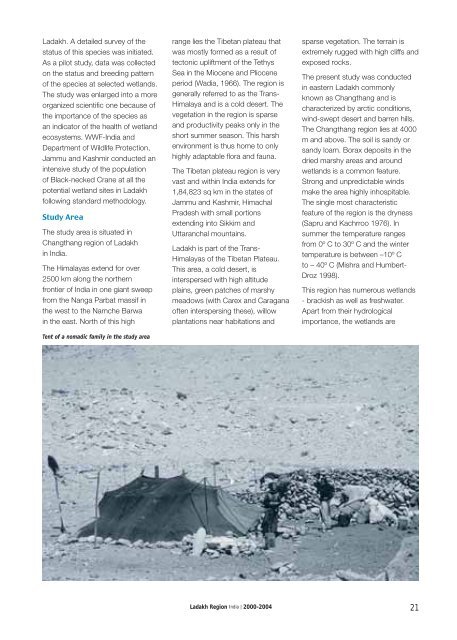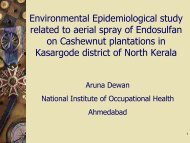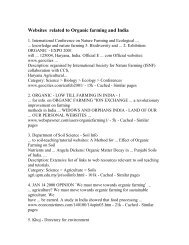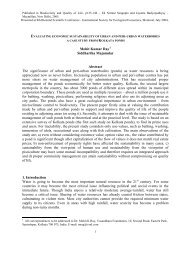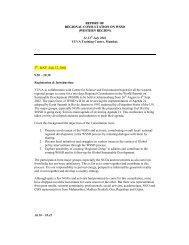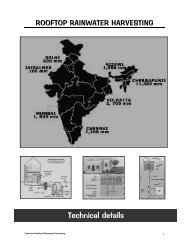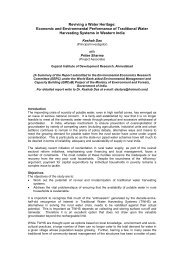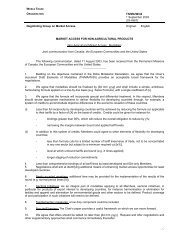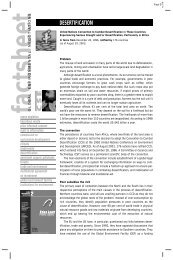Black-necked Crane - WWF-India
Black-necked Crane - WWF-India
Black-necked Crane - WWF-India
You also want an ePaper? Increase the reach of your titles
YUMPU automatically turns print PDFs into web optimized ePapers that Google loves.
Ladakh. A detailed survey of the<br />
status of this species was initiated.<br />
As a pilot study, data was collected<br />
on the status and breeding pattern<br />
of the species at selected wetlands.<br />
The study was enlarged into a more<br />
organized scientifi c one because of<br />
the importance of the species as<br />
an indicator of the health of wetland<br />
ecosystems. <strong>WWF</strong>-<strong>India</strong> and<br />
Department of Wildlife Protection,<br />
Jammu and Kashmir conducted an<br />
intensive study of the population<br />
of <strong>Black</strong>-<strong>necked</strong> <strong>Crane</strong> at all the<br />
potential wetland sites in Ladakh<br />
following standard methodology.<br />
Study Area<br />
The study area is situated in<br />
Changthang region of Ladakh<br />
in <strong>India</strong>.<br />
The Himalayas extend for over<br />
2500 km along the northern<br />
frontier of <strong>India</strong> in one giant sweep<br />
from the Nanga Parbat massif in<br />
the west to the Namche Barwa<br />
in the east. North of this high<br />
Tent of a nomadic family in the study area<br />
range lies the Tibetan plateau that<br />
was mostly formed as a result of<br />
tectonic upliftment of the Tethys<br />
Sea in the Miocene and Pliocene<br />
period (Wadia, 1966). The region is<br />
generally referred to as the Trans-<br />
Himalaya and is a cold desert. The<br />
vegetation in the region is sparse<br />
and productivity peaks only in the<br />
short summer season. This harsh<br />
environment is thus home to only<br />
highly adaptable fl ora and fauna.<br />
The Tibetan plateau region is very<br />
vast and within <strong>India</strong> extends for<br />
1,84,823 sq km in the states of<br />
Jammu and Kashmir, Himachal<br />
Pradesh with small portions<br />
extending into Sikkim and<br />
Uttaranchal mountains.<br />
Ladakh is part of the Trans-<br />
Himalayas of the Tibetan Plateau.<br />
This area, a cold desert, is<br />
interspersed with high altitude<br />
plains, green patches of marshy<br />
meadows (with Carex and Caragana<br />
often interspersing these), willow<br />
plantations near habitations and<br />
sparse vegetation. The terrain is<br />
extremely rugged with high cliffs and<br />
exposed rocks.<br />
The present study was conducted<br />
in eastern Ladakh commonly<br />
known as Changthang and is<br />
characterized by arctic conditions,<br />
wind-swept desert and barren hills.<br />
The Changthang region lies at 4000<br />
m and above. The soil is sandy or<br />
sandy loam. Borax deposits in the<br />
dried marshy areas and around<br />
wetlands is a common feature.<br />
Strong and unpredictable winds<br />
make the area highly inhospitable.<br />
The single most characteristic<br />
feature of the region is the dryness<br />
(Sapru and Kachrroo 1976). In<br />
summer the temperature ranges<br />
from 0º C to 30º C and the winter<br />
temperature is between –10º C<br />
to – 40º C (Mishra and Humbert-<br />
Droz 1998).<br />
This region has numerous wetlands<br />
- brackish as well as freshwater.<br />
Apart from their hydrological<br />
importance, the wetlands are<br />
Ladakh Region <strong>India</strong> | 2000-2004 21


